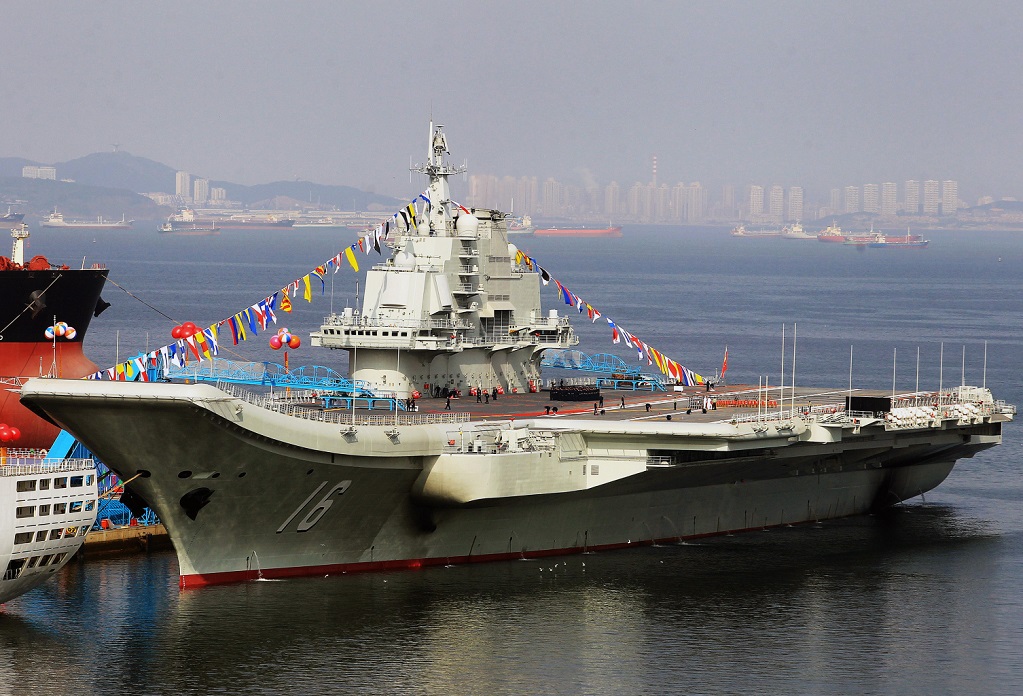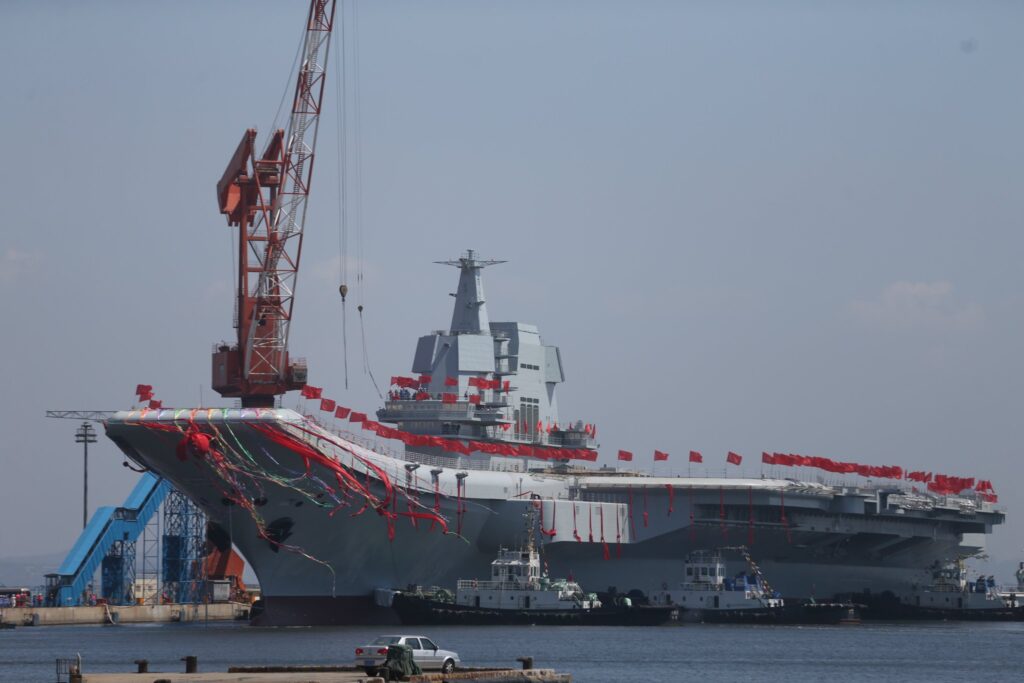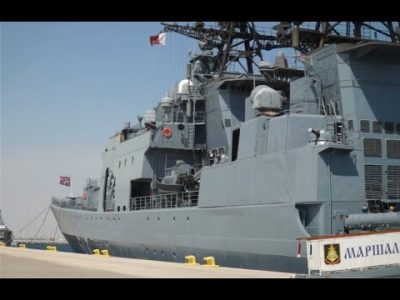Last Updated on 07/31/2021 by OTC
The aircraft carriers Liaoning and Shandong symbolize the Chinese Navy that shows to become a naval power. China has become a more capitalist country and started to need more raw materials from overseas sources. The rising Chinese economy has increased the importance of sea lines. By the 1990s, the Chinese Navy has transformed from a brown water fleet to a blue water fleet.
Background
China has been interested in aircraft carriers since 1970. Ex Australian aircraft carrier HMAS Melbourne bought to scrap, and ex-Soviet aircraft carrying cruisers Minsk and Kiev were acquired and converted into tourist attractions. These so-called peaceful civilian purchases provided know-how about aircraft carrier technologies and designs to China.
In 1999, Chinese naval planners were forced to acknowledge that country needs considerable force projection capability to maintain its economic and political expansion. Therefore, it was not an option, but it was necessary to have a carrier task group for the Chinese Navy.
The journey from Varyag to Liaoning
When a U.S. combat aircraft accidentally bombed the Chinese Embassy in Belgrade, China had already bought the Varyag from Ukraine during the Kosovo war. As the second Kuznetsov class aircraft carrier, she was launched in 1988. The construction work was completed 68 percent when the Soviets collapsed.
As the whole world expected, China changed its decisions and completed the construction of the Varyag. The ship entered service in 2011 as Liaoning. Unlike Russian sister Admiral Flota Sovetskogo Soyuza Kuznetsov, Liaoning does not have a 12 tube P-700 surface to the surface missile launcher. So, the ship has more space for hangar or storage.
General features
China equipped the aircraft carrier; with domestically developed subsystems such as Type 381 3D active electronically scanned array radar. The point defense was also provided by Chinese H/PJ-14 gun and FL-3000N missile systems. The main strike force of the carrier is J-15 combat aircraft. This system was developed based on J-11, which is the Chinese reverse engineering version of Su-27. In addition, Liaoning also carries Z-18F anti-submarine warfare, Z-18J airborne early warning, and Z-9C rescue helicopters.
The ship has 67,500 tons total load displacement, 304.5 meters length, 75 meters beam, and 8.97 meters drafts. The maximum speed of the Liaoning is 32 knots, and with this speed, she can reach the 7,130 kilometers range without refuelling. In general mission, the shipping carrier 24 J-15 fighters and six Z-18F, four Z-18J, and two Z-9C rescue helicopters.

The second aircraft carrier Shandong
The second Chinese aircraft carrier Shandong entered service in 2019. The ship has improved design compared to its predecessors, like a giant hangar and storage facility for ammunition and jet fuel. Shandong’s smaller island also provides more space for aircraft on deck. In addition, the fleet command and flight control tower are on separate floors, which provides more efficiency. So Chinese Naval ship designers have learned their lessons comes from Liaoning experience.
The exact technical details of Shandong have not been published yet. But it is believed that the ship has 70,000 tons full loaded displacement, 315 meters length, and 75 meters beam. It is estimated that her maximum speed is around 31 knots.

What do these pieces of knowledge tell us?
Today, China most giant factory in the world. This factory needs raw materials, energy, and markets. The primary sources of raw material and energy are the Middle East and Africa. These two parts of the world are linked with China by sea lines. In case of war, these lines could be disrupted.
The two aircraft carriers are improving China’s deterrence. So, they have a more negligible effect on a possible war, but they are highly effective in preventing a war.
The second important subject on Chinese naval interest is close waters like the Yellow Sea, the Japan Sea, the East China Sea, and the South China Sea. The meaning of a possible war on these seas would be a global scale war. This scenario is very similar to a possible war on Chinese sea lines in the Middle East and Africa.
Liaoning and Shandong have a more negligible effect on a possible war, but they are highly effective in preventing a war. The disputes over Paracel and Spratly islands are the third important topic. Finally, the Navy, with two aircraft carriers, provide significant leverage to China.

These ships have a Short Take-Off Barrier-Arrested Recovery system. It means relatively heavy J-15 fighters cannot be operated with their maximum take-off capacity. Chinese Naval staff is already accepting this fact. The second handicap of this system, it is not suitable for heavier cargo planes. Russian naval reports on the operation of Syria show that Admiral Flota Sovetskogo Soyuza Kuznetsov needs American C-2 Greyhound cargo aircraft to maintain function effectively.
However, this type of aircraft can land but cannot take from the carrier, which also has a Short Take-Off Barrier-Arrested Recovery system. So, Liaoning and Shandong have some technical difficulties for actual blue water carrier task group operations.
Because of this reason, China declared that third and fourth aircraft carriers would have Electromagnetic Aircraft Launch systems or Catapult Assisted Take-Off But Arrested Recovery systems.
Conclusion
If you have money and technical capability, you can build aircraft carriers. But real problems are to have a good crew and doctrines. These problems can solve by only getting experience, in other words, by time. In this respect, Liaoning and Shandong are very good training ships. Chinese naval staff knows that catching western naval tradition is long and hard, but new ships provide the opportunity to start achieving this goal over time.
The Liaoning and Shandong aircraft carriers will contribute significantly to the experience and knowledge that the Chinese Navy needs to have better and more advanced aircraft carriers.
Check out Naval Library App to learn more about the specifications of the Chinese aircraft carriers.















Comments